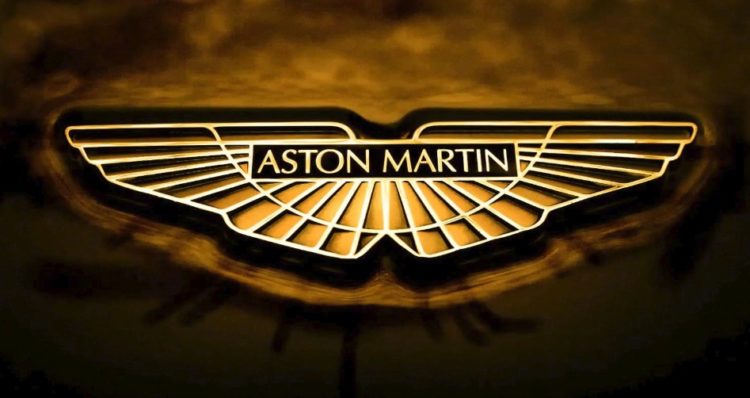
Aston Martin’s new era is taking shape. The three-pronged launch at the Geneva Motor Show last spring was the first step in a new model strategy that is gathering pace. But underpinning CEO Andy Palmer’s commitment to a “broader portfolio of products” are the constants that have shaped Aston Martin for over a century: technology, craftsmanship and design.
Marek Reichman, Aston Martin’s Chief Creative Officer, understands more than anyone else the importance of the company’s visual presence. Under his guidance, the Aston Martin Design Studio has pushed the company’s design ethos further than ever, creating a portfolio of concepts, limited-edition models and production cars that are united in their approach, yet each utterly distinctive. From the One-77 and CC100, through to the V12 Vantage Zagato and Lagonda Taraf, and the Vulcan and DP-100, Vanquish to DB10 and DBX Concept, Aston Martin’s identity shines through, despite the very different characters and qualities of the cars.
Aston Martin’s visual signatures are so essential to the brand and so widely recognised that the idea of altering them feels like sacrilege. Yet despite their familiarity, the elements that make up the foundations of every Aston Martin have changed constantly over the past six decades, reflecting changes in design, aerodynamics, materials and craftsmanship, all without losing the fundamental elements that make an Aston Martin what it is.
Reichman describes how the functional origins of Aston Martin’s signature elements have evolved to stay at the heart of the design process. “How did the grille start? It was driven by function in the early days,” he explains. “In the 1939 Atom, the grille starts to combine the elements of a generic upright radiator with side intakes that were originally there to cool the front brakes.” For a pre-war car, the Atom was unusually streamlined yet still consciously styled, creating a signature shape at a time of very generic, function-driven design. “Essentially, that was the origin of the Aston Martin grille shape,” Reichman continues. “If you were being very simplistic, you could say it was a box pushing out of an organic oval shape, with smoothed corners.”

After the war, the Atom’s “face” was further honed and evolved. In the earliest DB2s, the grille is still sub-divided into three distinct elements. Yet by the time the DB2/4 was shaped in the early 1950s, the essential form was there. Then, as now, the iconic grille was integral to the form of the road car, not the racing car. The racing DB3 and DBR1 eschewed the grille in favour of a neat oval opening, with faired-in headlights. Function drove form, with scoops and cutaways behind the front wheel arches providing vital cooling and airflow.
The side vent is derived first from the scoop-sided 1956 DB3S, which gave way to a clean-sheet design, the classic DBR1 of 1956 — winner of the 1959 Le Mans — where the scoops were replaced by a discrete air outlet. “The DBR1 never really carried the front grille in the same way, but it gave us the side strake instead,” says Reichman. “It was designed to take air from the engine compartment to cut resistance created by the flow of air through the front grille. They became an iconic signature.”

DBR1’s road-going contemporaries were, of course, the classic run of “DB” cars, starting with the DB Mark III of 1957 and the DB4, 5 and 6 that followed. Here, the grille found its quintessential incarnation and from the DB4 onwards, the side strake from the racing car manifested itself as an instantly recognisable opening behind the front wheel arch, an oval with a “dart” of chrome through its centre. From that moment onwards, the grille and side strake became inseparable from Aston Martin. Without them, there was something of a void. The radical departures of the 1970s, like the original Lagonda and Bulldog, did away with the grille and side strake altogether, while the early 1970s DBS V8 used the form to encompass the whole front end of the car, including the twin headlights. But by the time the V8 was revised in 1973, the grille had returned to being a simple radiator surround, albeit much simplified from the earlier forms. The lineage continued through the original Vantage to Virage, DB7, DB9 and into the modern day.
“Today, these elements are the DNA that generates the shapes of the cars,” says Reichman. “We pour them back into the product. The CC100, Vulcan and One-77 all have prominent side strakes integral to the form of the car. It’s the character of our products.” The One-77 and CC100 took the form to its extreme, carving deep shapes in the flanks to emphasise the dynamic form of the car and the power derived from the engine.
The future will bring new challenges. “As we go forward we will still have engines to cool and feed air into, so we still need to use these elements for a functional reason,” Reichman says. “But even though the DBX Concept has no engine as it’s electric, the DNA of our cars requires the grille to be there. It’s a GT crossover so it carries a grille despite not needing one.” Likewise in both the DB10 and Vulcan, the grille form is placed lower on the nose than ever before, with the latter blending it into the material and form of the carbon-fibre front spoiler. In a similar vein, the DP-100 — a car created for the extreme speed and out-of-this-world racing of Gran Turismo on the PlayStation — bears a grille blended into the geometry of the nose cone, creating forms that rise up and over the front wings to shape the cockpit and rear deck of this hypothetical machine. “The grille’s upward inflection is not the most natural line, but it’s characterful and beautiful,” the designer explains. “It’s an incredibly complex line to model in three dimensions.”
As Aston Martin powers into the future, its visual identity will evolve. “Next generation cars will still have to have a recognisable face, even if it has evolved into something you hardly recognise as a grille,” Reichman says. “Although the DBX is a new venture, it almost needs that grille more than the Vulcan, which is a car that continues what we’ve been about for 100 years.” The grille also plays another critical role in Aston Martin, helping to reinforce and demonstrate one of the company’s core values. “The grille adds value to a car through materials,” Reichman explains. “In many respects they are completely hand-crafted, with metal that is welded and polished. Of course, with our racing cars we don’t need that grille embellishment, now and historically, which is why the grille is less prominent.”
All great car designs can be broken down into their constituent parts: a line, a detail, a curve. The very best forms can be pared back to practically nothing, with a simple device like a silhouette or iconic detail speaking volumes about the make, model and era of a particular car. “These elements are a signature for who we are. It says we’re Aston Martin,” says Reichman. “They are symbols of the things we stand for.” And long may they continue to do so.

70 Years In The Making: The Evolution Of The Aston Martin Vantage
Just last month, the carmaker unveiled the V12 Vantage Roadster. And so, the Vantage saga continues!
Start Of A New Era
It was in 1950 when the name “Vantage” first appeared. At the time, Aston Martin offered it as an upgrade option for the DB2 sports car. The Vantage option particularly meant larger carburetors and higher compression ratio pistons, thereby upgrading the output of the 2.6-liter Lagonda engine from 105 hp to 125 hp.
In the 1950s, the Vantage upgrade for the DB2 means a more powerful option. However, it was only in the 1960s when Aston Martin started offering sports cars officially bearing the Vantage moniker. It began with the DB4 Vantage in 1961, followed by the DB5 Vantage (1964) and the DB6 Vantage (1966).
Then in 1967, Aston Martin created the DBS Vantage, which started the model’s angular model shape. AM Vantage followed in 1972, which gained notoriety as the least powerful offering in the carmaker’s line-up back then.
First British Supercar
A few years later in 1977, Aston Martin introduced the V8 Vantage as Britain’s first supercar. The production run of the V8 Vantage ended in 1988, but a few years prior, Aston Martin crafted the hyper rare V8 Vantage Zagato.
In 1993, Aston Martin revived the Vantage as the high-performance supercharged version of the Virage. It was then followed by the next installment of the V8 Vantage. The carmaker also built special editions of the Vantage — V550, V600 and V8 Vantage Le Mans – until it terminated the model in October 2000.
The Vantage Of Today
Then in 1999, the British carmaker introduced the DB7 V12 Vantage, followed by the V8 Vantage in 2005. A few years later in 2009, the iconic V12 Vantage was launched. It ushered a number of powerful versions, such as the V12 Vantage S and the V12 Vantage Zagato.
The latest iteration of the sports car came in 2018, when the Aston Martin Vantage was launched. It was followed by the Vantage AMR in 2019. Just last month, the carmaker unveiled the V12 Vantage Roadster. And so, the Vantage saga continues!




